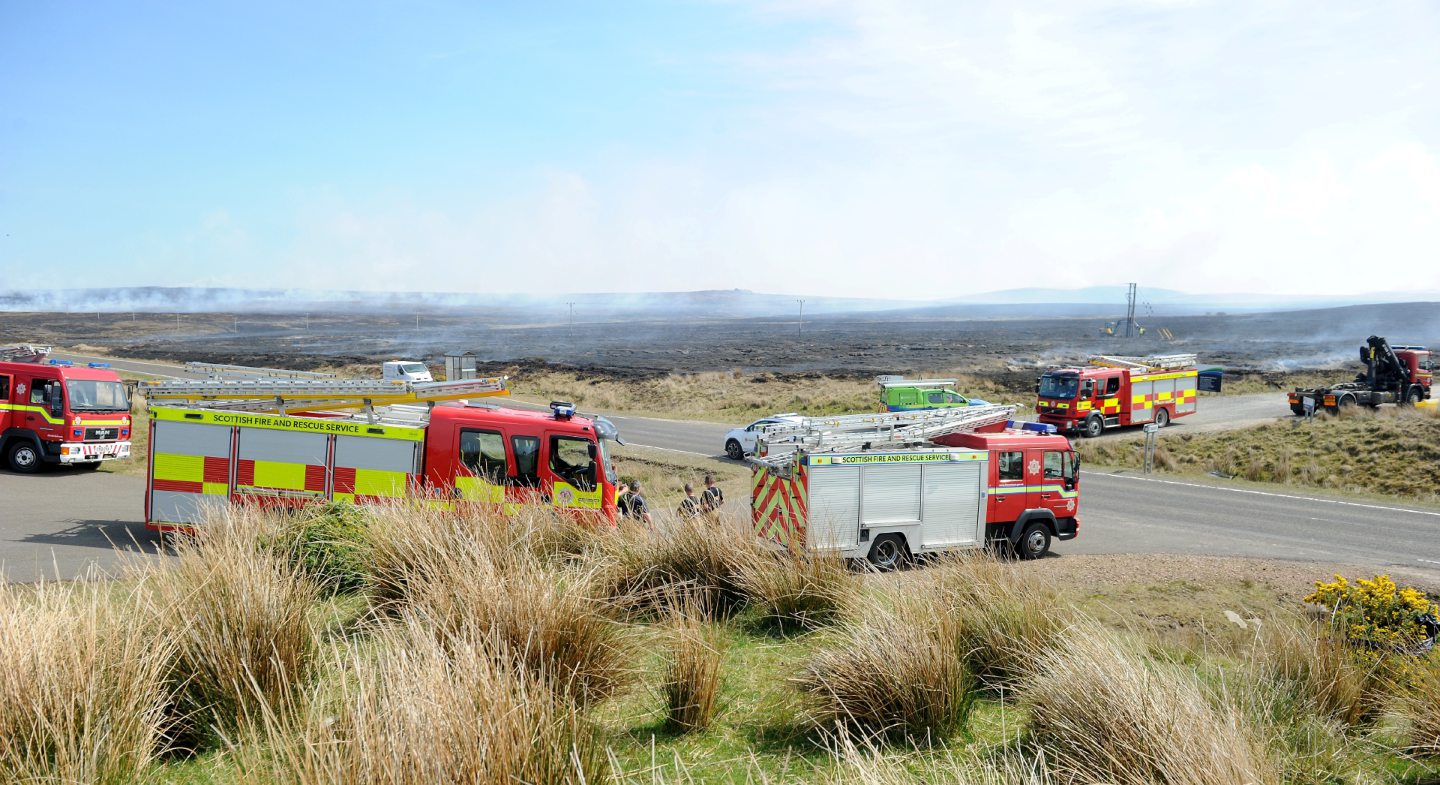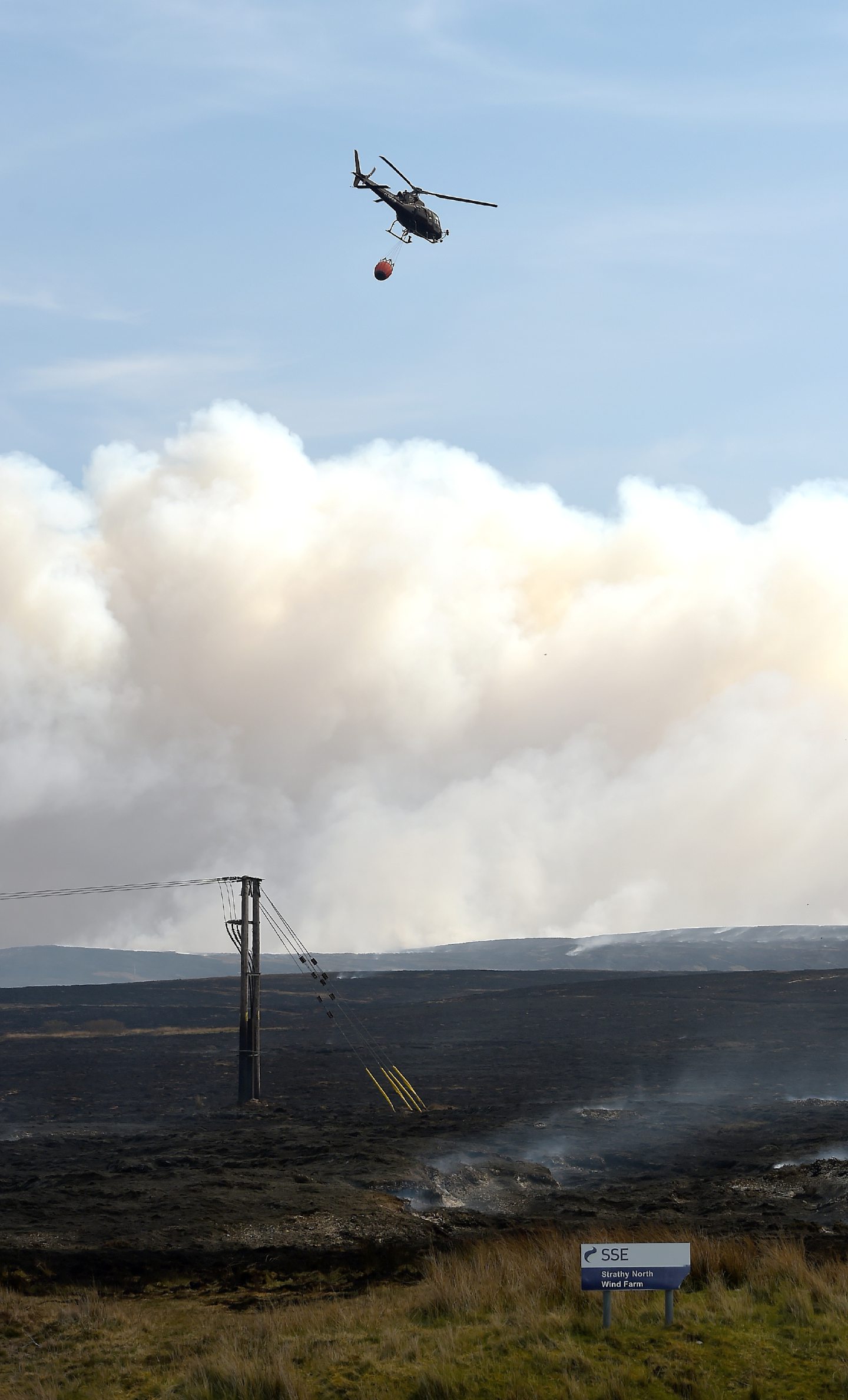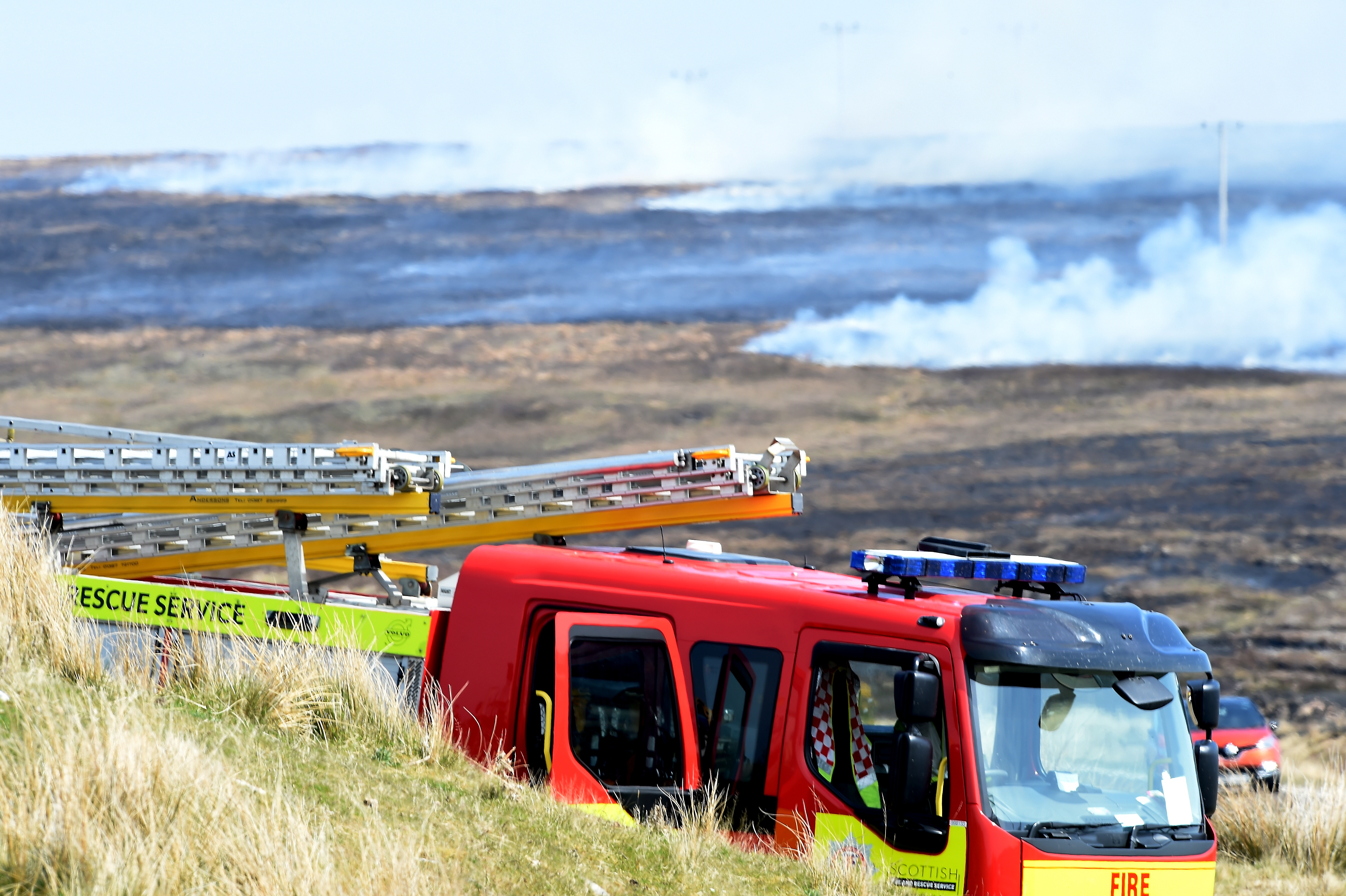It is almost 9pm when Alex McKinley calls, and his softly spoken lilt floats down the line.
He apologises for the late hour, and says he has been left with no choice but to cancel our interview, which was due to take place the following day.
It is likely that his shift will stretch into the early hours, as he keeps watch at a remote spot in Melvich, near Thurso.
It is not the first time he has found himself bunking down at a local fire station, such is the nature of his job.
Dozens of people are relying on Alex to find a way forward, awaiting his instruction as how best to fight the flames.
There is no sense of urgency in his voice however, rather he is calm and collected.
His level-headed nature has no doubt been invaluable, and Alex is one of only two wildfire tactical advisors in Scotland.

He heads up operations for the north, and his expertise has been called upon for yet another wildfire in the region.
He has been in demand in recent weeks, having helped lead the response to a major wildfire in Moray.
It is now believed to have been one of the biggest wildfires in the UK, spreading across an estimated 27 square miles of land between Knockando, Dallas and Dunphail.
The flames raged for more than four days and, at its height, the blaze had to be tackled by 80 firefighters.
The incident prompted calls from local politicians that more must be done to prevent wildfires in the future, the effects of which can be devastating. Rural and remote communities can be particularly impacted, with livestock, farmland, wildlife and protected woodland all at risk.
When Alex makes contact several days later, the Melvich fire is still smouldering, and he has been on site throughout the week.
But what exactly does Alex’s role entail, and should the north-east ready itself for more wildfires in the future?
“There is absolutely no doubt that wildfires are on the increase, and it is mainly down to climate change,” he said.
“Our dry spells are lasting far longer than they did 30 years ago. If you look at the winter just past, it was reasonably dry. This means that vegetation has not rotted away, so it’s there ready and waiting as fuel.
“Wildfires can start for a number of reasons. I would say the majority are caused by carelessness though. For example, if someone flicks away their cigarette in a lay-by. Or if people are camping and having campfires and barbecues. Wildfires can also start when people accidentally burn rubbish.

“Occasionally there can be a fault with an electrical power line which starts a wildfire.
“Over the years we’ve seen it all. This is why we urge people to be mindful.
“I have been a fireman for 25 years, and I have been a trained tactical wildfire advisor for the past two years.
“Each fireman trains in a different speciality, and I happened to choose wildfires.”
A 999 call to report a wildfire can come from a variety of sources, including partnering agencies such as the police or estate owners.
The location and extent will be assessed, before Alex must decide which specialist equipment to use.
“We can call on a variety of specialist resources, from fogging units to dousing,” said Alex.
“We can also make use of something called the community asset register. This is a database where the general public have volunteered the use of something they own.
“It could be a drone for example, and these can be invaluable.
“A drone can enable us to really understand the scale of the fire, and we can send imagery to the command unit by using an aerial platform.
“People also volunteer us the use of all-terrain vehicles, which again, are invaluable.
“Wildfires often start in pockets of land which are extremely hard to reach using a normal vehicle.
“This makes it an incredibly harsh environment for our crew.
“There are also specialist tools we can use to cut into vegetation, and create fire breaks.
“A fire break can act as a safety lane for crew, and it’s also an escape route.”
Although every fire has the potential to be deadly, wildfires can be particularly lethal due to the speed at which they can spread.
Their severity is dependant on the type of fuel burning, wind conditions and whether the fuel has been pre-heated by the sun.
The flames can travel at a speed of 15-20mph, and will travel faster up hill.
“The response to a wildfire is highly organised and co-ordinated, everybody is focused on the task in hand,” said Alex.
“Each member of crew will know exactly what they are meant to be doing, and have their own area of land to focus on.
“We’re dealing with a very hostile environment, and although we rotate crews, the long hours are arduous.
“The size of a wildfire can be awe-inspiring, the heat is intense and the smoke plumes build up.
“But training always kicks in.
“My main objective is to make sure we are fighting the fire on our terms.
“We don’t want the fire taking control of us, and so we wait for a window of opportunity.”
As the flames take hold, Alex must assess when the fire will reach its weakest point.
This may mean waiting for a fire to travel up hill, before catching it as it slows down on its descent.
A new tactic which is already used in hot regions such as California, where wildfires are more common, is to fight fire with fire.
“We used this tactic for the Moray fire, and it involves us predicting where the fire is going,” said Alex.
“We then find a safe place to light a fire and control it.
“When the two fires meet, there is no fuel left to burn.”
In particularly remote locations, fire engines can struggle to reach the scene.
An alternative is to use water bombing, where a 1,000-litre bucket is tipped from a helicopter.
The water will be taken from a rural source, such as a loch, and crew can also take their own water supply on their back.

Alex is keen that people are made aware of how to prevent wildfires in the first place though, and is also grateful for the help received from communities.
“Estate workers, farmers, I am always incredibly moved by the people who come rushing to help us,” said Alex.
“In recent weeks, so many businesses have also come forward with offers of food and accommodation for our crew.
“I became a fireman because I wanted to help people, but so many people help us in return.
“Good land management is key when it comes to wildfires.
“If land is managed efficiently, it decreases the amount of fuel available, so the fire is smaller and more manageable.
“If land hasn’t been managed well, the fire will be bigger and cover a far wider area.
“That’s why we encourage estates to burn responsibly.
“We also issue wildfire warnings, and the fire service will be taking the number of wild fire tactical advisors up to 12, so we have someone stationed in each area.
“Wildfire stations will be strategically positioned, and all firefighters will be getting enhanced training.
“Education and spreading the word on social media plays a huge part as well.
“Wildfires can be catastrophic for communities in so many different ways.
“If it impacts on electricity, it is the vulnerable people who suffer the most.
“The elderly, for example, or someone who relies on home dialysis.
“The fire can go right up to the door of a house in a remote location.
“Fires can also reignite if it has gone right down into the peat.
“Our job is to keep ourselves safe, keep communities safe and educate people for the future.
“When you do something so worthwhile, you can’t help but carry on the fight.”